
New Items - Photos, page 8
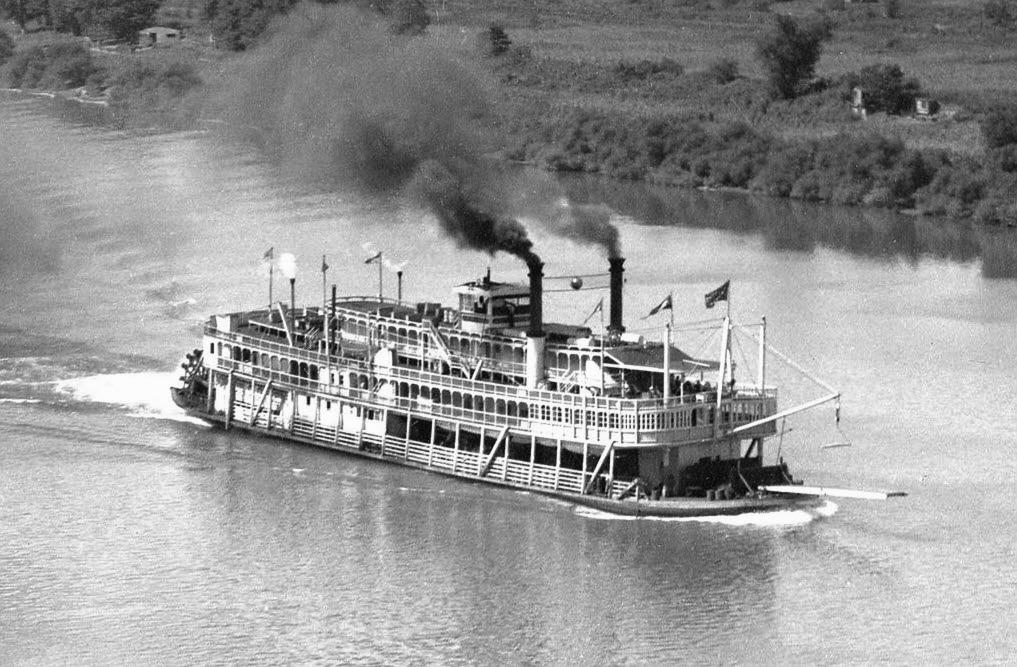
Aerial view of the GORDON C. GREENE
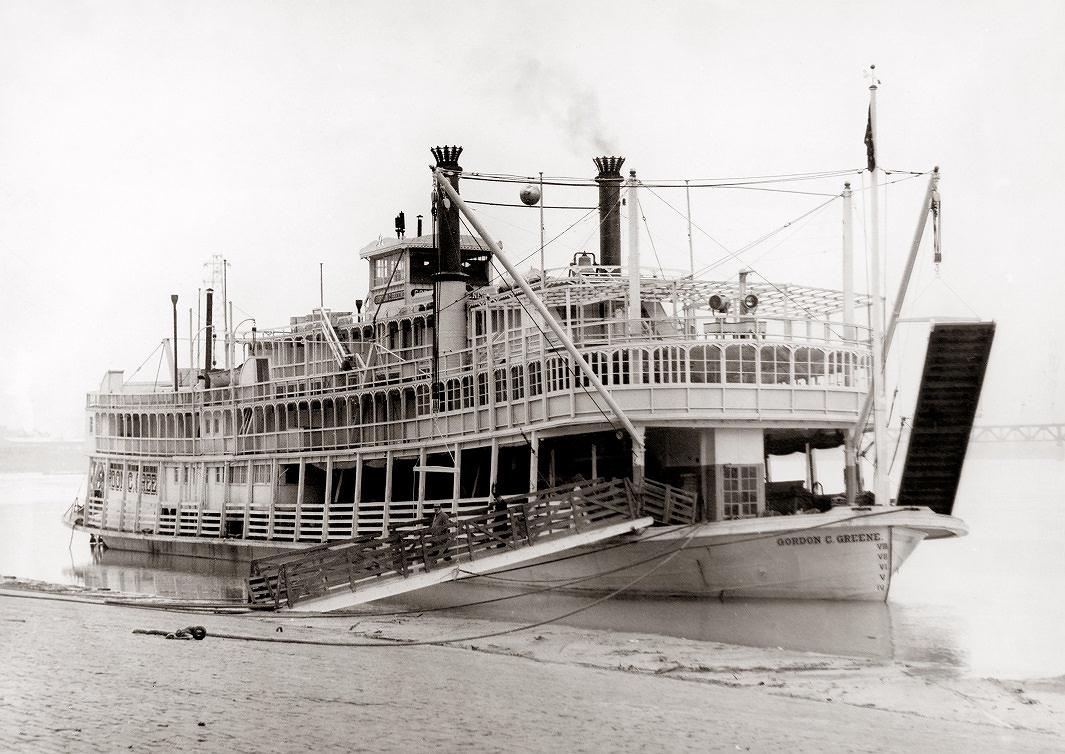
GORDON C. GREENE 8 x 10 from France
Rubber stamped on the back:
ROCK HILL STEAMBOATS
P.O. BOX 4012
Louisville, Kentucky 40204
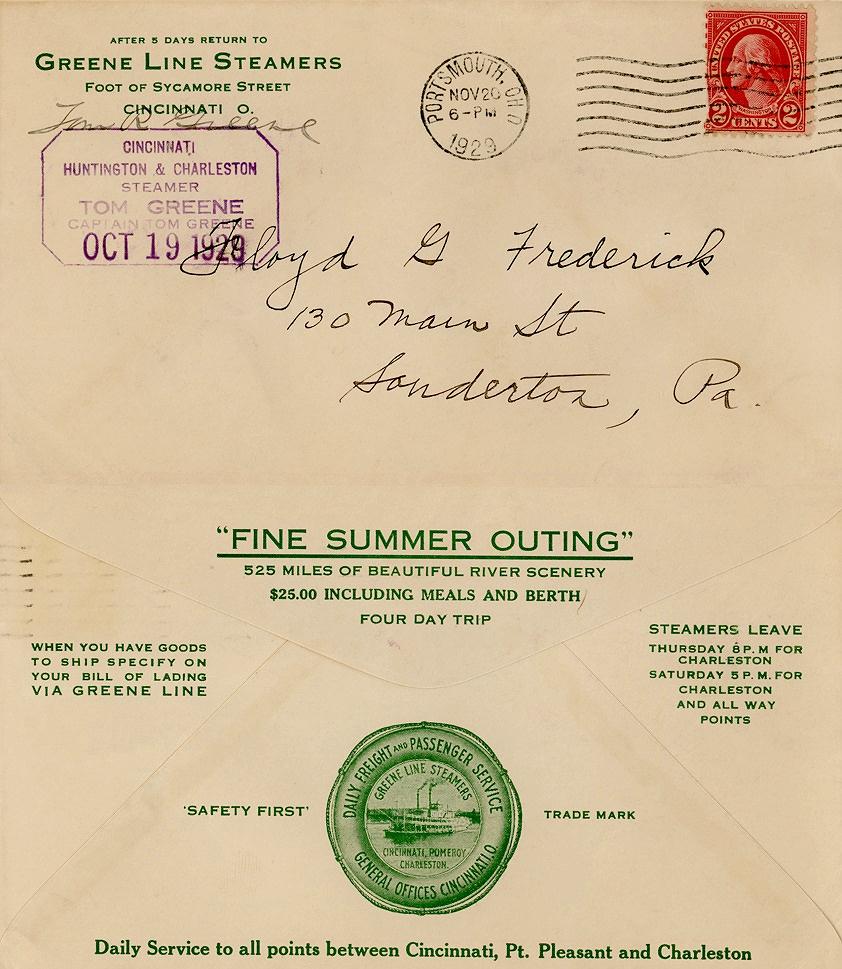
Front and back of an envelope from the TOM GREENE, post marked 1929
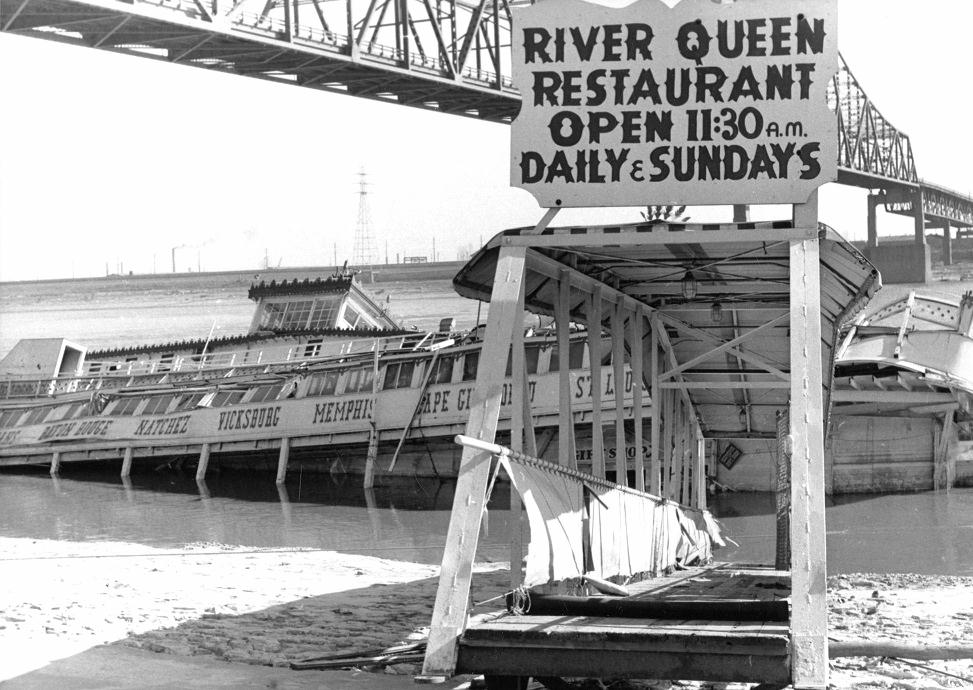
RIVER QUEEN sunk at St. Louis in December 1967 photo taken by Gary Clermont
When the GORDON C. GREENE was retired at Cincinnati, Ohio in 1952 she was sold to become a floating hotel at Portsmouth, Ohio named "Sarah Lee."
In 1955 she was renamed "Sternwheeler" and became a restaurant and museum at Owensboro, Kentucky.
After spending some time as a floating restaurant and/or tourist attraction in Florida, she was converted in 1960 to a theater, bar and tourist attraction at New Orleans, Louisiana.
In 1961 she was sold to Hannibal, Missouri and renamed "River Queen," selling food and drink.
In 1964 she was moved to St. Louis, near the Eads bridge, and was used as a restaurant until she sank in December 1967.
Her wreckage was removed but the steel hull remained and portions can still be seen during low water.
Her whistle went to the Ohio River Museum in Marietta, Ohio and other artifacts were donated to the Cape Girardeau Museum.
The photo of the RIVER QUEEN sunk at St. Louis in December 1967 was taken by Gary Clermont in La Crosse collection
Caption edited from La Crosse text
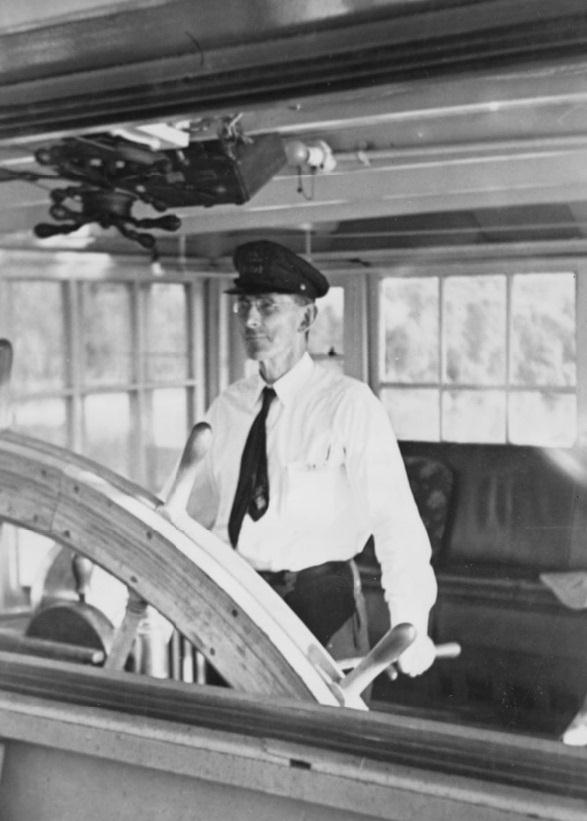
Captain Jesse P. Hughes at the wheel
of the GORDON C. GREENE
From La Crosse collection
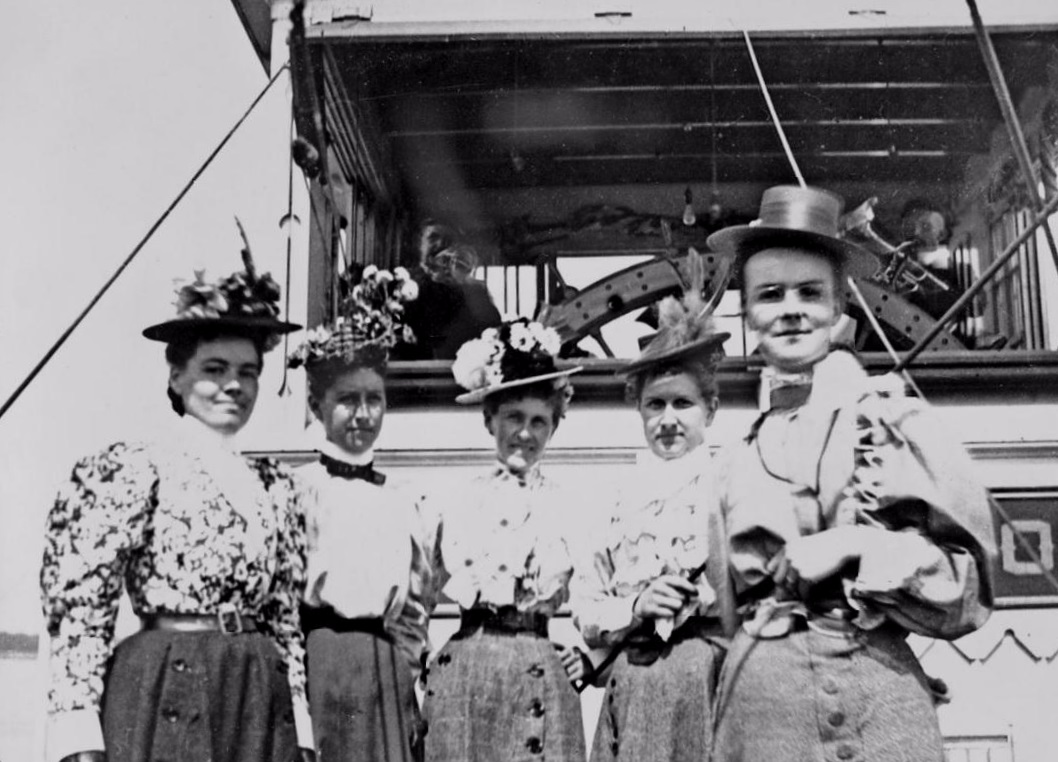
Ladies in front of the pilot house of the CITY OF WINONA
Group of five women standing on deck in front of the CITY OF WINONA'S pilot house. It may be an illusion, but the two uniformed men in the pilot house could have been playing in a band aboard the boat and seem to be blowing melodious sounds into the mouthpieces of brass musical instruments.
CITY OF WINONA
Sternwheel Packet
Way's Packet Directory Number 1147
Built in 1882 at Dubuque, Iowa
Rebuilt at Kahlke yard and renamed WINONA circa 1893
Owned by the Youmans Brothers and Hodgins, Winona, Minnesota; Captain John Streckfus; Acme Packet Company
Originally built as a rafter by Youmans Brothers and Hodgins for the Upper Mississippi River.
It towed logs to their sawmill and it was also used as a private pleasure boat.
Later bought by Captain John Streckfus to compete with the JO LONG in the Davenport-Clinton trade.
First boat of the season to arrive at St. Louis from below, April 12, 1888
Officers & Crew: James Newcomb (captain and pilot); E.E. Fuller (chief engineer); Hiram Fuller (engineer); Captain Stedfast (1899); Thomas Withroe (captain/first pilot); Frank Diamond (2nd pilot); William McCraney (engineer, pilot in 1894); William E. McCraney (assistant engineer); Henry Seyfried (mate); Captain George Winans.

Captain Cooley's AMERICA at the foot of Canal Street
New Orleans 1900
Detail from 8 x 10 glass negative
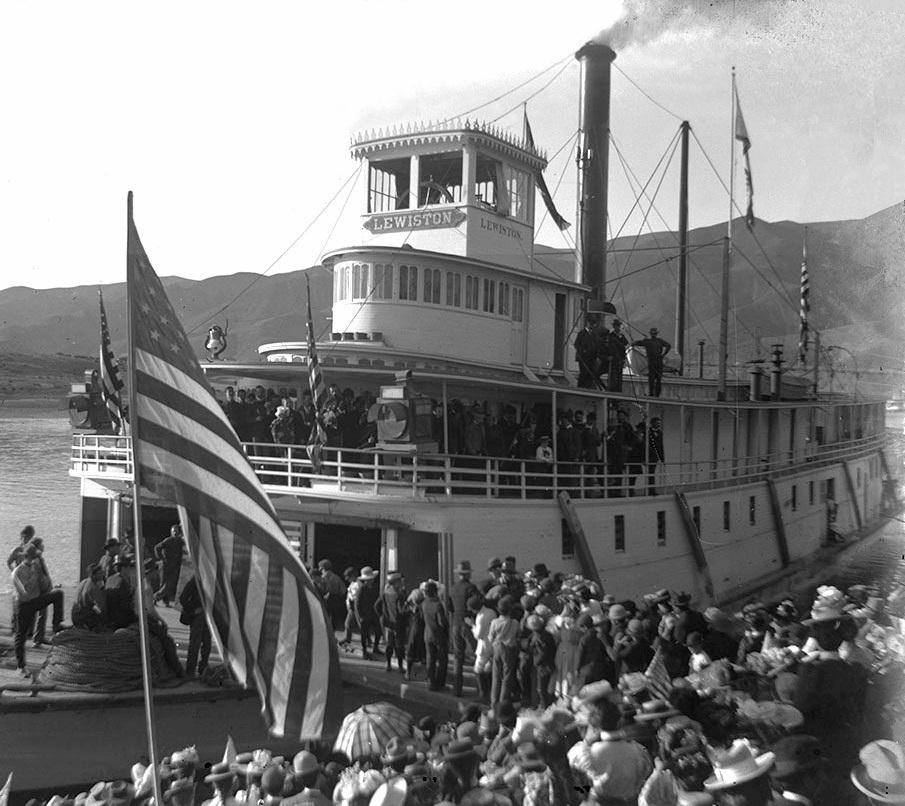
There are four boats named Lewiston:
Lewiston (1867) Umatilla, Oregon
Lewiston (1894) Riparia, Washington
Lewiston (1905) Riparia, Washington
Lewiston (1923) Linnton, Oregon
This one, sent to us from Robert Tomecek must be one of the earlier two. The style is much more "Classic" in detail while ours looks like it was built a much later.
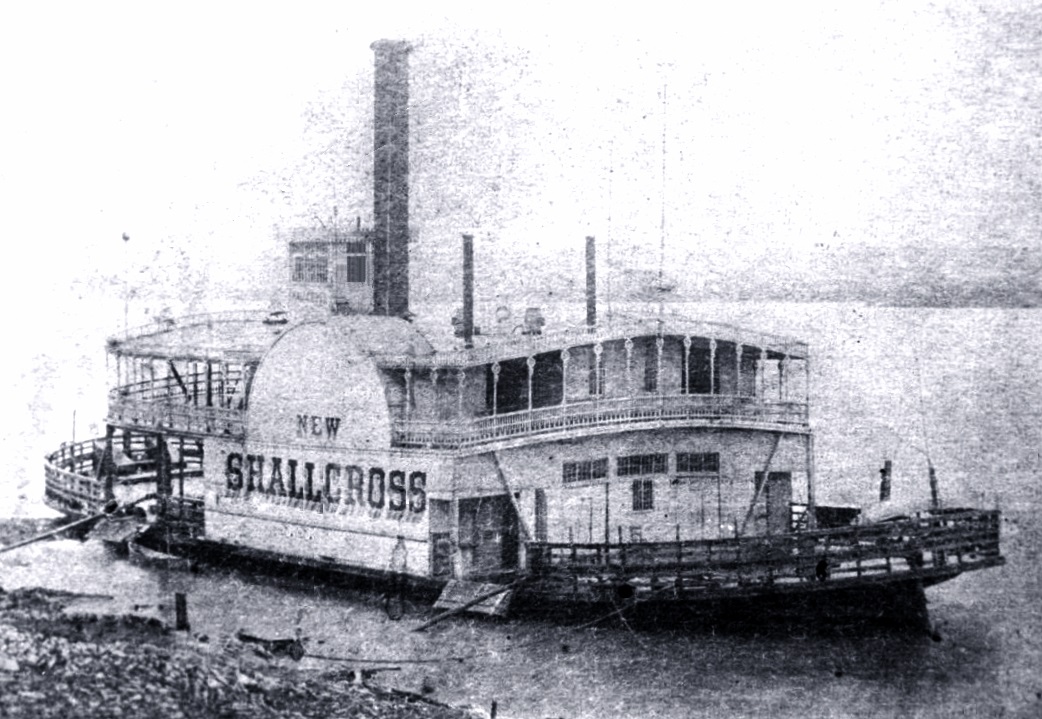
NEW SHALLCROSS Sidewheel Ferry
Way's Packet Directory Number 4188
Built in 1878 at Jeffersonville, Indiana by Howard Ship Yard
Louisville and Jeffersonville Ferry Company
Home port or owner's residence circa 1878, Louisville, Kentucky.
Original price, $13,000.
In 1891, her engines went to the ferry COLUMBIA.
Photo from La Crosse
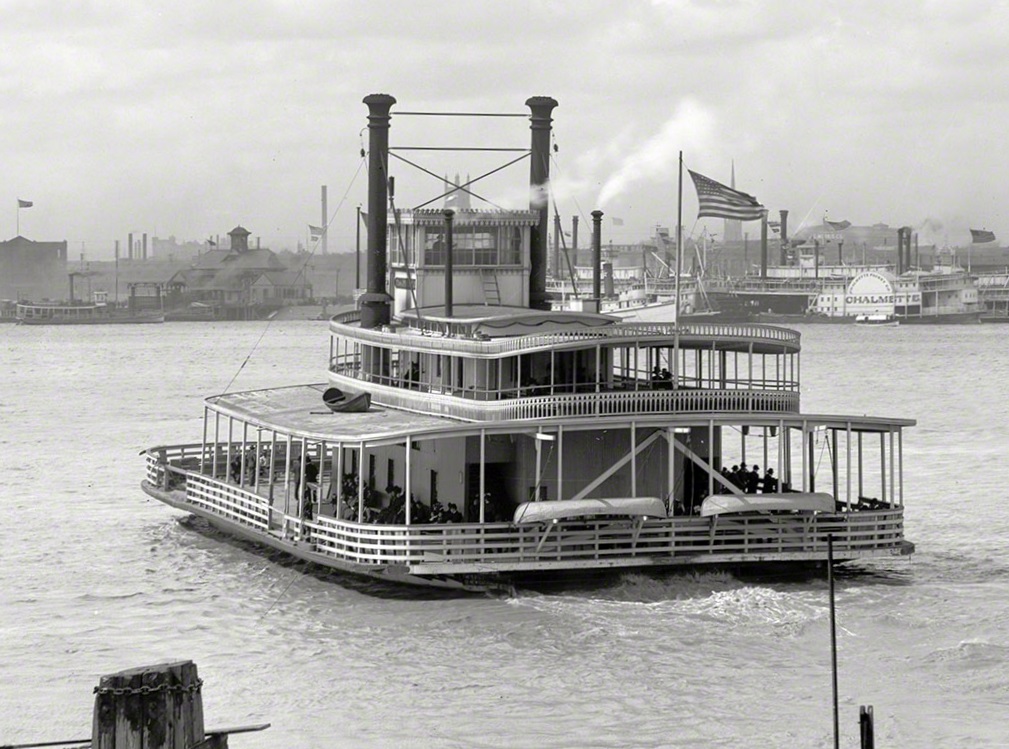
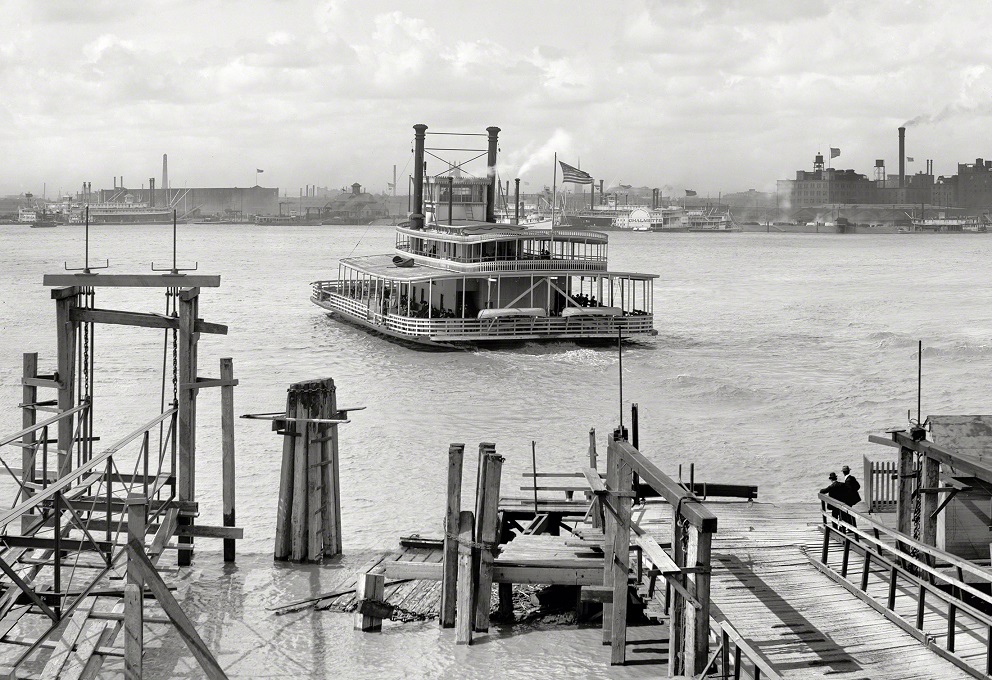
New Orleans circa 1900 ferry Thomas Pickles
Details of a panoramic photograph taken from Algiers, Louisiana looking across the Mississippi in 1900 with the centerwheel ferry THOMAS PICKLES en route to New Orleans, Louisiana on the opposite shore.
From 2 8 x10 glass negatives that had been composited on SHORPY.
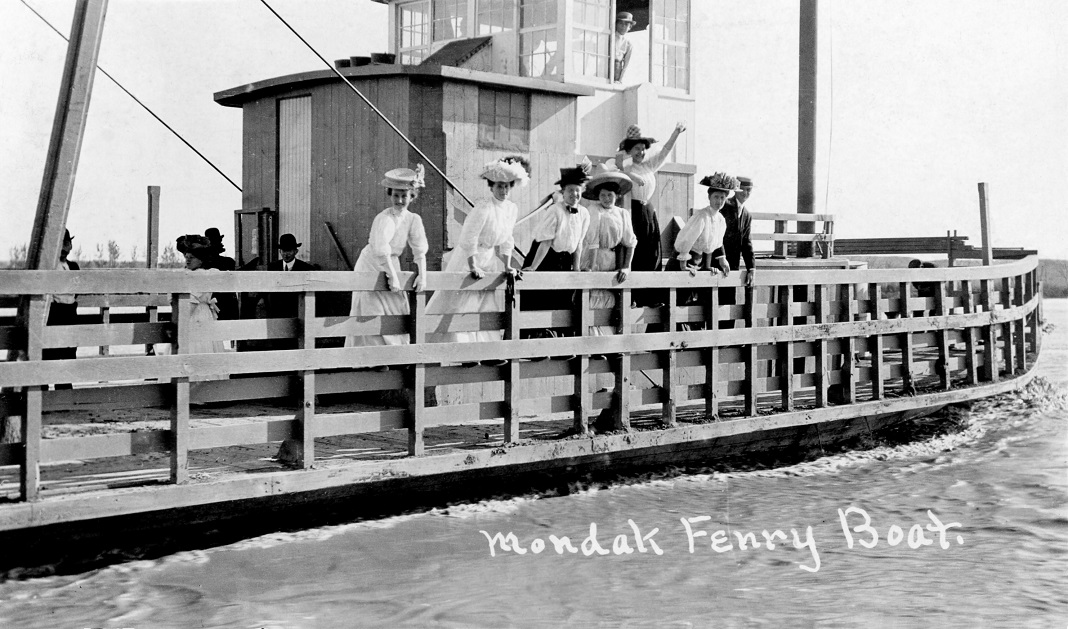
The Missouri River ferry that crossed the Missouri River at Mondak, Montana.
Excerpted from Wikipedia:
Mondak is a ghost town in Roosevelt County, Montana, United States, which flourished from 1903 to 1919, in large measure by selling alcohol to residents of North Dakota, then a dry state.
Mondak—a portmanteau name derived from the MON in Montana and the DAK in the adjacent state of North Dakota—was created in 1903, mostly by local investors who realized that profit could be made by selling beer and liquor to North Dakotans.
Because of its strategic location on the Missouri River and the Great Northern Railway, Mondak quickly became a thriving village. The first building was constructed in 1904, and Mondak soon boasted a bank, two hotels, three general stores, and several grain elevators. It also eventually had a church, a newspaper, a two-story brick school, and a part-time electric generating plant. Locally raised grain and cattle were shipped to Minneapolis on the Great Northern, but the town's most profitable business remained alcohol sales.
During its heyday, Mondak had at least seven saloons and a number of warehouses to store alcohol. Gambling and prostitution were never legal but always winked at. There were many accidents involving inebriated men, and the crime rate was high for the size of the community.
Mondak's prosperity was short-lived. The area entered a drought cycle in 1916; and the Snowden Bridge, completed in 1913, reduced ferry traffic across the Missouri. In 1916, a fire destroyed several saloons and a warehouse and badly damaged a hotel and a general store. In 1919 Montana instituted prohibition. Although Mondak was never entirely dry, prohibition "cramped Mondak's style." When the county seat, provisionally located in Mondak, moved to Poplar in 1920, Mondak's decline accelerated. In early 1924, the railroad station closed, and the bank, the town's last viable business, closed in 1925. In 1928 another fire destroyed many remaining buildings. The scant remains of the ghost town are on private property within a mile of Fort Union Trading Post National Historic Site and within two miles of Fort Buford State Historic Site, North Dakota.

New Orleans circa 1900 ferry Thomas Pickles
Detail of a panorama of New Orleans circa 1900.
The centerwheeler ferry Thomas Pickles.
From an 8x10 glass negative on SHORPY

With the exception of images credited to public institutions,
everything on this page is from a private collection.
Please contact Steamboats.com for permission for commercial use.*
All captions provided by Dave Thomson, Steamboats.com primary contributor and historian.
